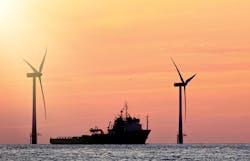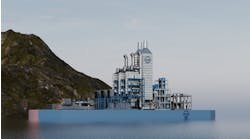Maciek Bejm, V.Group
Although the offshore supply vessel (OSV) market remains challenging, prospects are finally improving. The offshore industry is moving into recovery mode with the majors preparing to invest $208 billion on offshore drilling and oilfield services this year, according to Offshore Support Journal. This is welcome news for owners of OSVs, with one in five vessels among the global fleet thought to be currently in layup.
However, any near-term gains from the increased activity will be tempered by the continued glut of vessels, a result of over-ordering during the boom in oil prices and speculative building activity in shipyards across Asia, fuelled by supportive bank credit. Added to this, charter rates across most asset classes and regions are still running at or close to operating cost levels. In the past, the revenue of a vessel might have been four or five times its opex, but now operating margins are much tighter. Assets that cost billions have lost 80% of their value, yet owners continue to service debts based on the original transaction prices.
In order to secure future profitability and build resilience in an increasingly volatile market, OSV operators will need to be more ambitious with their cost-cutting plans. In an Altman Z-score analysis of OSV companies last year, 34 out of 38 had scores of less than 1.8, indicating a high likelihood of bankruptcy. So, companies that had hoped for a dramatic rebound in vessel demand are now at serious risk, as there is no guarantee that their existing finances will sustain them through the current environment.
So, what should a shipowner’s top priorities be in returning to profitability? Along with restructuring debt, it is essential to find ways of returning vessels from layup to active service as quickly and efficiently as possible. Out of the current fleet, some newly received assets are ready to start work; others in cold layup may never be reactivated, while a ‘grey area’ of vessels will need the right set of circumstances to come back online. This category includes vessels between five and 10 years old, with a large deck, notably subsea construction, IRM (inspection, repair and maintenance), and survey vessels. In these cases, the reactivation price will depend on how well they have been preserved, and how economically they can be brought back into service.
The cost of reactivation, and the time taken to do so, can both be improved through strategic procurement. This involves critical element analysis to ensure that spares, equipment, and components are purchased as economically as possible. For example, if a company plans to add a platform supply vessel at three locations, it would have to buy six thrusters as each would require a spare. However, applying critical element analysis shows that a thruster might fail once in two years, so with the right infrastructure in place, it would be cheaper to buy one set of spares and transport it around the world, rather than paying millions of dollars more for two additional thrusters in order to have one in each location. Relationships with shipyards and global suppliers are critical to this process.Strategic procurement is a resource-intensive procedure which relies on quantities of scale and logistics networks that may be out of reach for many offshore vessel owners and operators. For this reason, ship managers are well placed to add value through established strategic procurement solutions that could otherwise take years to develop in-house.
In the long term, strategic procurement solutions will be necessary to keep offshore opex rates low. However, it will also be essential to ensure that talent levels are restored to the same levels as they were prior to the downturn. Ship management companies can help to fill this skills gap.
The offshore sector’s safety standards can be more rigorous than in other commercial shipping sectors. In many cases, the onus is on the customer to provide an additional team to oversee operation of the vessel and ensure compliance with various safety regulations, which can lead to unforeseen costs. V.Group has created its own safety management system, which has been audited and vetted by oil companies. The system is compliant with IMCA standards, and is verified by FPAL, Achilles, and clients. By working closely with clients, and by hiring people with the experience of working at the highest levels of health and safety, it is possible for third-party managers to supply crew that can handle the majority of offshore operations.
With OSV use on the upturn, the worst may well now be over for the offshore sector. However, the OSV market will continue to suffer from low day rates for the near term, which means that turning increased demand into profitability is by no means simple or guaranteed. It is therefore essential for ship managers to play a consultative role and add value through shared expertise and strategic procurement. •




